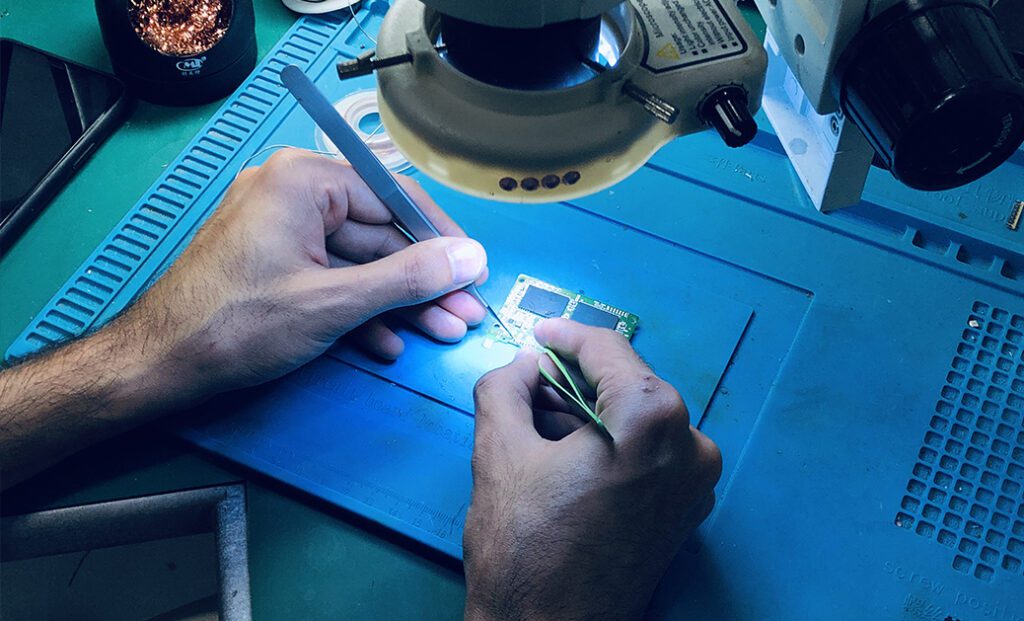If you’ve ever popped open the sleek aluminium shell of a Mac and thought, “How hard could it be?” you’re not alone. DIY tech repairs are on the rise, especially with countless YouTube tutorials and iFixit guides floating around. But when it comes to Apple devices, especially MacBooks, the reality hits harder than a dropped logic board.

So, let’s get real. Have you ever actually tried a DIY hardware MacBook repair? Here’s why it’s not as simple as it looks and why many people end up turning to professional Mac repair specialists like 73inc in Auckland.
The Allure of DIY Mac Repairs
There’s a certain thrill in fixing something yourself. It saves money (in theory), teaches you a new skill, and gives you major tech bragging rights. Many people try DIY repairs for:
- Battery replacements
- Screen repairs
- RAM or SSD upgrades (on older models)
- Fan or speaker issues
With the right tools and some patience, minor Mac repairs might be doable especially if you’re dealing with a pre-2016 MacBook Pro or an older iMac. But that’s where the good news ends.
The Harsh Reality of DIY Mac Repairs
1. Apple Doesn’t Want You to DIY
Modern Macs are built with precision and secrecy. From pentalobe screws to soldered RAM, Apple goes out of its way to make internal access difficult.
- Proprietary screws: You’ll need a special toolkit.
- Glued components: Batteries, displays, and trackpads are sealed in tight.
- Soldered parts: No RAM upgrades on modern MacBooks. It’s part of the board.
So unless you’re a tech hobbyist with experience and a microscope, you’re entering risky territory.
2. One Wrong Move Can Cost You Big
A simple slip while removing the battery or disconnecting a flex cable can:
- Short your logic board
- Tear a ribbon cable
- Crack your screen
- Void any remaining warranty
We’ve seen it too often at 73inc, someone tried a DIY MacBook repair, and now the damage is twice as bad (and expensive).
3. You May Misdiagnose the Problem
That flickering screen? Could be the backlight, the display cable, or the logic board. That charging issue? Might be the battery, the charging port, or something deeper. Unless you’ve got diagnostic tools and training, you’re just guessing.
What’s Actually Repairable at Home?
If you’re determined to try DIY Mac repairs, here’s what’s considered relatively safer:
- Replacing a fan (if easily accessible)
- Swapping out an SSD (on older models only)
- Replacing the battery (if not glued)
Even then, proceed with caution. Use anti-static tools, follow detailed guides, and don’t force anything. YouTube videos often skip crucial safety steps.
Why Most People End Up at a Repair Shop Anyway
Let’s be honest: unless you’re doing this for fun or as a profession, it’s not worth the risk. That’s why so many users who start a DIY MacBook repair end up searching for Mac repair specialists later.
Here’s what goes wrong most often:
- DIY screen replacements result in ghost touches
- Battery swaps cause startup failures
- Misaligned components break the device casing
At 73inc, we regularly get DIY repair rescues and we’re here for it. But prevention is cheaper than recovery.
How 73inc Can Help
Based in Auckland, 73inc is your go-to for trusted, high-quality Mac repairs. Here’s what we offer:
- Diagnostics-first approach: We pinpoint the real issue before opening your device.
- Transparent pricing: We’ll always tell you what the repair will cost upfront.
- Diagnostic fee deducted: If you go ahead with the repair, the fee comes off your total.
- Fast turnaround: Most MacBook repair jobs are done in 24–48 hours.
- High-quality parts: No Apple-authorized markup, but only tested and compatible parts.
Whether it’s a logic board issue, a dead SSD, or an overheating fan, our Mac repair specialists have the skills (and tools) you don’t.
The Rise of Right to Repair
Thanks to growing pressure from tech advocates, Apple is slowly opening up more to Right to Repair initiatives. In theory, this means more parts, manuals, and tools will become available to users.
But we’re not there yet. And even with access to tools and guides, execution still matters. A poorly done repair can cost you more than just the part, it can destroy your entire device.
Until the day comes when Macs are as repair-friendly as DIY PC builds, Mac repair specialists will remain a necessity for most.
So, have you ever tried to repair a Mac by yourself? If you have, you probably learned the hard way that it’s not just another Sunday project. Apple’s design is sleek for users, but complicated for tinkerers.
That’s why partnering with trusted Mac repair specialists is the smart move. You save time, stress, and ultimately, money.
Whether you’re in over your head with a half-open MacBook or you’re just trying to be proactive about maintenance, 73inc is here to help with top-tier Mac repairs in Auckland.
Let the pros handle it. Because sometimes, opening up your Mac opens up a whole new world of problems.


